Papal Bulls:
Christian anti-Semitism is also clearly seen in numerous Papal Bulls
[authoritative encyclicals issued by a Pope]. Examples include:
(Year)
1218 Pope Honorius III, In
general concilio:
Demanded the enforcement of the 4th Lateran Council decree that Jews wear
clothing to distinguish themselves. Jews were also made to pay tithing to local
churches.
1239
Pope Gregory IX, Si
vera sunt:
Ordered the seizure and examination of Jewish writings, especially the Talmud,
which was suspected of blasphemies against Christ and the Church.
1244
Pope Innocent IV,
Impia judeorum perfidia:
Stated that Jews could not hire Christian nurses.
1267
Pope Clement IV,
Turbato corde:
Legally barred Christians from converting to Judaism.
1414
Pope Benedict
XIII, (title unknown):
Jews prohibited from studying the Talmud and Talmudic Literature. All copies of
the Talmud to be confiscated. Jewish communities forbidden to build more than
one Synagogue. Jews not allowed to eat, bathe or trade with Christians. Jews not
allowed to hold any public office. Jews not allowed to participate in any
artisan trades or to practice medicine. Jews required to wear a red or yellow
badge three times per year: during Advent, on Easter and during the summer. Jews
were required to attend Christian sermons. (Benedict was deposed before these
rules could go into effect, but most were subsequently imposed by later popes,)
1442
Pope Eugene IV,
Dundum ad nostram audientiam:
Complete separation of Christians and Jews (formation of Jewish ghettos)
"Such are the carnal Jews, who seek only what sense perceives. Who delight in
the corporal senses alone. , , , Herod is the Devil, the Jews
demons; that one is King of the Jews, this one is King of the demons."
--Pope Innocent III (1198-1217) (Synan 1965: 88-89).
Ecumenical Councils:
Several Ecumenical Councils also focused on Jews,
including:
The Fourth Council of Toledo
in 633: Christians were forbidden to eat with Jews, receive medical care from
Jews, or to bathe with Jews and condoned the kidnapping of Jewish children and
having them raised as Christians (Rowan 1985: 83).
Canons 67 to 70
passed by the Twelfth Ecumenical
Council (IV Lateran)
in 1215 dealt directly with the Jews and became part of Canon Law.
Canon 67
dealt with the
growing preoccupation of the Jews with money lending. The princes (who derived advantage from Jewish wealth) were urged to compel the Jews
to abstain from immoderate usury. At the same time, Jews must be
made to pay the tithe to the local churches for property formerly owned by Christians and now fallen into the hands of Jews.
Canon 68
dealt with the question of keeping Jews and Christians apart. This was
the regulation establishing the Badge.
Canon 69
re-asserted the
prohibition against Jews holding public office.
Canon 70 dealt with converts from Judaism to Christianity, who must be compelled to
stay within the Christian fold. The regulation takes on added significance
from the forced conversions that accompanied the Albigensian crusade and the
anti-Jewish activities of the crusaders on the way to the Holy Land. One of
its paragraphs called upon the secular authorities to compel the remission
by Jews of debts owed them by those who took the cross
.
According to Grayzel (1967:
287), Jews and Judaism figured to some extent, directly or indirectly, in
almost every one of the first 20 ecumenical councils.
Numerous other Ecumenical Councils over the centuries
dealt with issues related to the Jews. The 20th ecumenical council
(First Vatican) (1869-1870) was called to strengthen faith in response to the
challenge of liberalism and secularism, both strongly connected with Jews. The
rise of liberalism in America and western European countries led to the
emancipation of Jews from medievalism. This council established the doctrine of
papal infallibility, partially in response to that challenge. (Grayzel 1967: 311)
Other discriminatory policies were directed at Jews
throughout the centuries, including forced conversions (frequently involving the
kidnapping of Jewish children); locking Jews in ghettos at night so that they
could not leave; and requiring Jews to listen to sermons condemning Judaism and
accusing them of the killing of Christ. Thousands of Jews also suffered
torture, punishment and death, typically through burning at the stake and
quartering (using four horses or oxen to tear a person apart by the limbs), resulting from
trumped up charges of kidnapping and killing Christian children in order to
obtain their blood for ritual purposes ("Blood Libel"). Similar punishments
resulted from charges of stealing and torturing of hosts (wafers representing
the body and blood of Jesus used in Eucharist rituals).
In one not uncommon instance, Ferrant
Martinez, deputy for the bishop of Seville and Confessor to Queen Mother
Leonora, called for the razing of synagogues “in which the enemies of God and
Church practice their idolatry.” When Martinez became the administrator for the
diocese of Seville in 1390, he demanded the destruction of Jews and Judaism. His
sermons instigated an anti-Jewish pogrom that spread throughout most of Spain.
The violence began on Ash Wednesday 1391 and lasted for decades during which
municipal officials and common people looted and massacred as many as 50,000
Jews and forced thousands of others to be baptized. According to one Jewish
chronicler at the time, Christians “set fire to its [the ghetto’s] gates and
killed many of its people, but most changed their religion, and some women and
children were sold to the Moslems” (Michael 2006: 99). These riots marked the
beginning of the movement that led eventually to the expulsion of Jews from Spain in 1492.
One of the most ubiquitous
accusations leveled against Jews was for the ritual killing of Christian
children in order to provide blood for Satanic Jewish rituals. Hundreds of such
accusations mere made, resulting in the torture and death of thousands of Jews (see Hsia 1988; Dundes
1991; Gulson & Wijacza 1997; Kerzer 2001: 86-105, 152-165, 213-236; Julius 2006;
Introvigne 2007). Guldon and Wijaczka (1997:139) document eighty-one cases
of ritual murder accusation between 1547 and 1787 in Poland alone: 16 during the
sixteenth century, 33 during the seventeenth century, and 32 during the
eighteenth century. Trials generally involved the repeated torture of accused
Jews until they "confessed" to their crimes. The
Strappada (hanging a
person by their arms tied behind their backs) was one of several methods
commonly used to get a desired confession. Individual accusations (which were all without
basis) often resulted in the trial and execution of several innocent Jews,
and in some cases in riots that led to the killing of dozens or more Jews and
the destruction and looting of Jewish property.
|
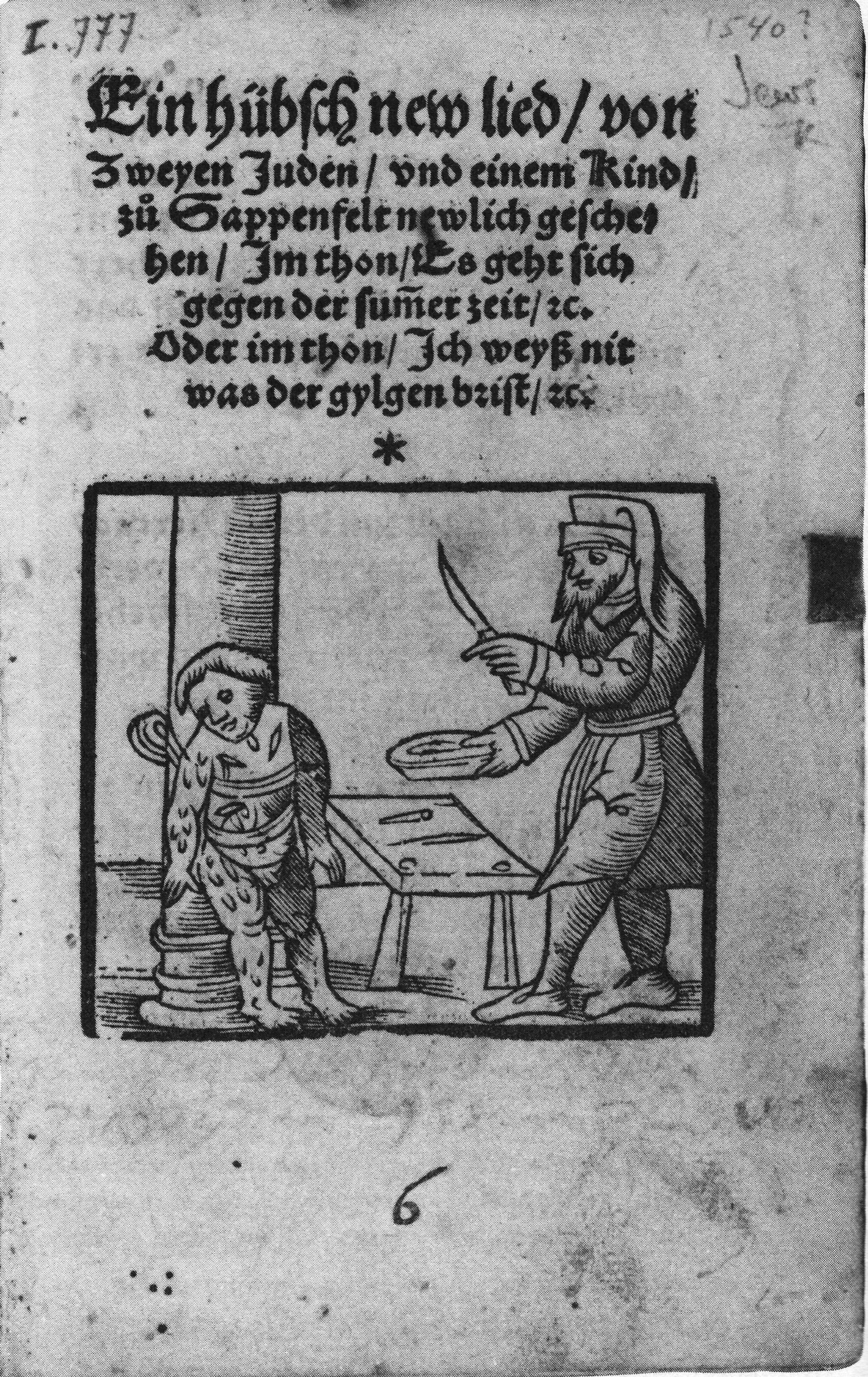
Illustration of a Jew Ritually Torturing a Christian
Child
(1540)
|
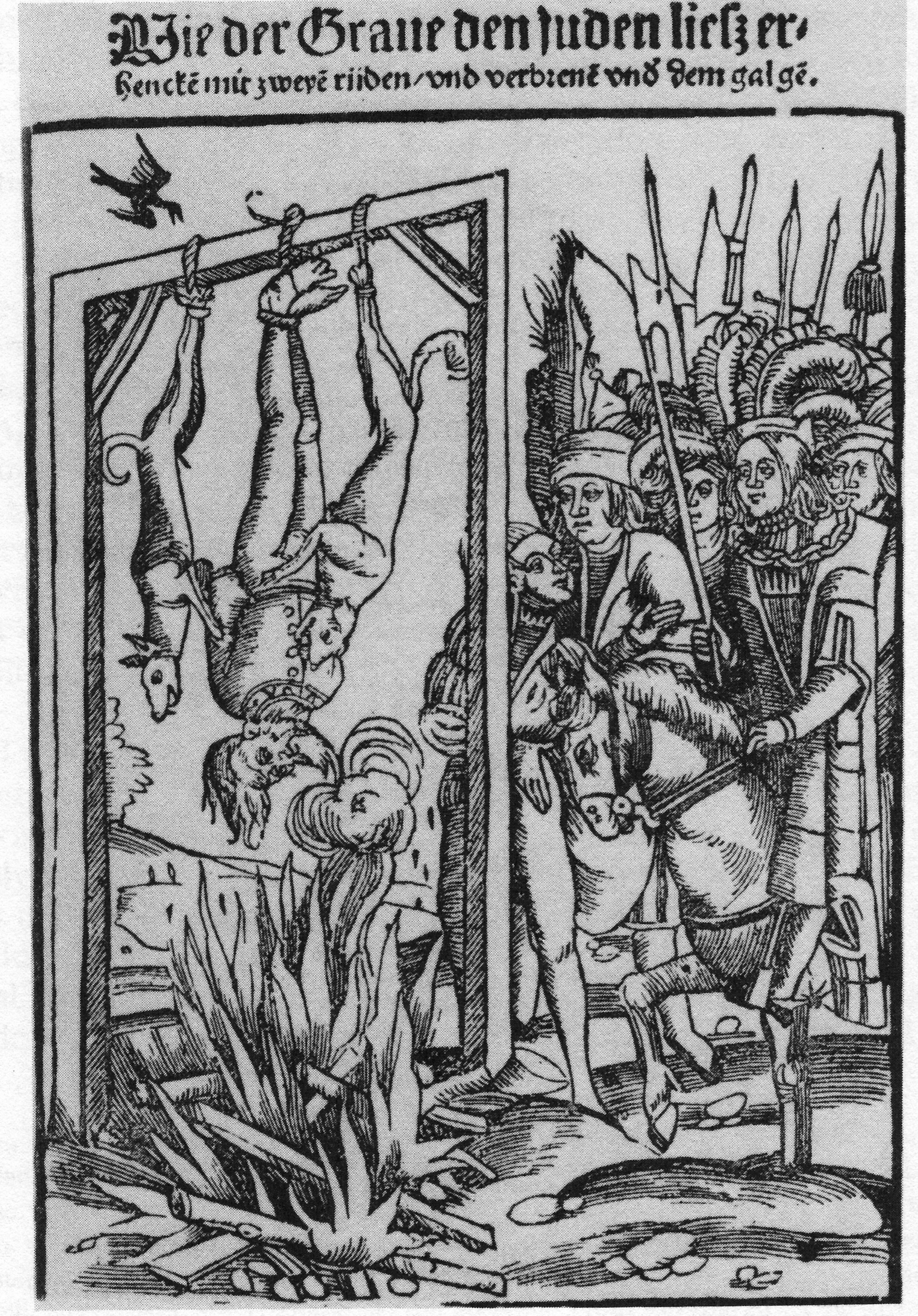
A Jew hung and burned to death
between two dogs
(1486)
|
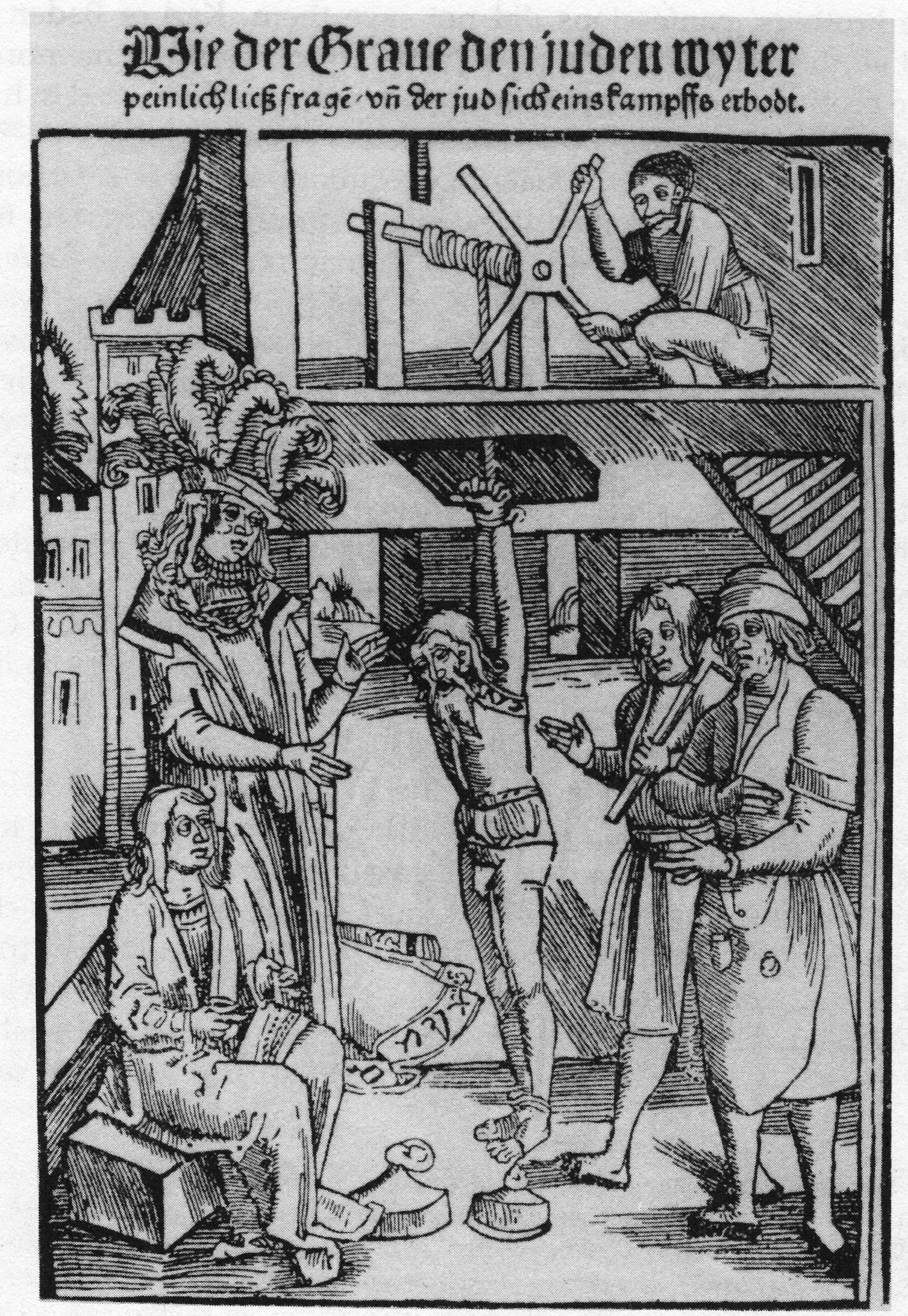
The Strappada
The Crusades:
Violence against Jews increased significantly with the rise of the Crusades. The
Christian Church launched nine "Holy Wars" against "Infidels" in order to gain
control of Jerusalem. Hundreds of thousands of Christian soldiers invaded
the Middle East between 1096 and 1272. Additional Crusades were also
launched against the Cathars in Southern France (1208-1242), the Hussites in
Bohemia (1420-1431), and a host of other Papal adversaries. A central
feature of the Crusades was the wholesale killing of non-believers and the destruction of
their communities. The Crusades were bloodbaths, involving even the slaughter
of Byzantine Christians by invading Christian armies from Western Europe. Jews
were also to suffer from this bloodletting. Many crusaders questioned why
they were traveling hundreds of miles to fight Muslims when an even worse enemy
--the Jews-- lived within their midst. This sentiment was expressed quite
forcibly by Peter "The Venerable", abbot of Cluny:
"What does it profit to
track down and to persecute enemies of the Christian hope outside, indeed far
beyond, the frontiers, if the evil, blaspheming Jews, far worse than Saracens,
not at a distance, but in our midst, so freely and audaciously blaspheme,
trample underfoot, deface with impunity Christ and all Christian mysteries?"
As a
result, the mass killing of Jews began with the very first crusade in 1096 and
continued until the last crusade was competed. French Crusaders in 1096
slaughtered thousands of Jews in the Rhineland on their way to Jerusalem. One group of crusaders attacked the Jewish communities in the Rhineland under
the slogan: "Why fight Christ's enemies
abroad when they are living among us?" They
attacked the synagogue at Speyer and killed all of those who defended it. An
additional 800 were killed in Worms. Another 1,200 Jews committed suicide in
Maintz rather than be forced to convert to Christianity. Some 5,000 Jews
died in this series of killings. Michaels (2006: 64-68) provides a description of
the slaughter in the Rhineland taken from both Christian and Jewish chroniclers
of the time.
At Mainz,
the Crusaders asked, "Why should we
let them [the Jews] live? Why should they dwell among us? Let our swords begin
with their heads. After that we shall go on the way of our pilgrimage." The
Crusaders then approached the Jews' houses. "When they saw one of us, they ran
after him and pierced him with a spear." At Mainz also, Count Emicho "showed no
mercy to the aged, or youths, or maidens, babes or sucklings -not even the sick
. . . killing their young men by the sword and disemboweling their pregnant
women." Albert of Aix confirms the premeditated nature of Emicho's assault on
Mainz, adding that "Emicho and the rest of his band held a council and, after
sunrise, attacked the Jews . . . with arrows and lances. . . .They killed the
women also, and with
their swords pierced tender children of whatever age and sex." . . .
Two days later, at Worms, after a
rumor held the Jews responsible for attempting to poison the wells to kill the
townspeople, the Crusaders and burghers unsheathed their swords and cried out, "
'Behold the time has come to avenge him who was crucified, whom their ancestors
slew. Now let not a remnant or a residue escape, even an infant or a suckling in
the cradle.' They then came and struck those who had remained in their houses."
At Mainz, most townspeople fought alongside the Crusaders. But a minority of
burghers tried unsuccessfully to help the Jews. In the end, the Jews were blamed
for the conflict between townspeople and Crusaders and slaughtered.
So
many Jews were slaughtered during the First Crusade that many historians refer
to the year 1096 as the "First Holocaust".
Indeed, as Christians were to demonstrate for several centuries thereafter, they
took a back seat to no one when it came to killing people in the name of God. In
addition, all Christians who went on a crusade were released of all obligations
to pay back loans owed to Jews, which bankrupted many Jewish merchants and
moneylenders.
Jews
were also repeatedly blamed for the various plagues that infected Europe.
The
12th Council of Toledo (681)
explicitly associated Jews with the plague.
As a result, it enacted 28 laws against Jews and called upon the faithful to
"Tear the Jewish pest out by the root."
One of those decrees, according to Michael (2006: 213), stated that "Jewish
parents who circumcised their children were to have their property confiscated
and their noses cut off."
Pope Innocence III wrote to King Phillip Augustus of
France in 1205 that "when [Jews] remain living
among Christians, they take advantage of every wicked opportunity to kill in
secret their Christian hosts."
Talmud Trials
The Church also conducted several "Talmud
Trials"
to determine to what extent the Talmud contained beliefs that could be
considered blasphemy. The Talmud became a central focus of Christian hostility
towards Judaism. Beginning in the thirteenth century Church authorities
periodically called for the destruction of all copies of the Talmud (see
Rembaum 1982; Chazan 1998;
AICE). In 1240,
Pope Gregory IX ordered all prelates and monarchs of Europe to see to it that
all copies were handed over to the friars of the two new mendicant orders --the
Franciscans and the Dominicans-- who would burn them. The king of France, later
to be canonized as St. Louis, had more than twenty wagons filled with the
manuscripts, containing more than twenty thousand copies in all, and
publicly had them burned. Three centuries later, in 1553, a renewed papal
campaign against the Jews was kicked off with the public burning of the Talmud
throughout the Papal States.
Selected Examples of Anti-Semitic Actions:
A
clear picture of the extent of endemic Christian anti-Semitism can be seen in
the list of incidents presented below. Significantly, this list covers less than
250 years and contains only a small fragment of the total number of acts
perpetrated by Christians against Jews in Europe during the time period covered by the
list. Many more incidents could easily have been included. Moreover, several
additional centuries of persecution were to follow. Even with this caveat, the
incidents listed below illustrate the extent to which persecution of Jews was a
fundamental feature of European Christian society.
Selected Incidents:
1189 A
Jewish deputation attending the coronation of Richard the Lionhearted was
attacked by the crowd. Pogroms in London followed and spread around England.
1190 All
the Jews of Norwich, England found in their houses were slaughtered, except a
few who found refuge in the castle.
1190 500
Jews of York, England were massacred after a six day siege by departing
Crusaders.
1236
Crusaders attacked Jewish communities of Anjou and Poitou in France and
attempted to baptize all the Jews. Those who resisted (est. 3,000) were
slaughtered.
1240 Pope
Gregory IX puts the Talmud on trial on the charges that it contains blasphemy
against Jesus and Mary, as well as attacks on the Church.
1242 24
cart-loads of hand-written Talmudic manuscripts were burned in the streets of
Paris.
1242 James
of Aragon (France) orders Jews to listen to conversion sermons and to attend
churches. Friars are given power to enter synagogues uninvited.
1244 Pope
Innocent IV orders King Louis IX of France to burn all copies of the Talmud.
1254 Louis
IX expels the Jews from France, confiscates all their property and their
synagogues.
1267 In a
special session, the Vienna city council forces Jews to wear
Pileum cornutum
(a cone-shaped headdress, prevalent in many medieval illustrations of Jews).
This distinctive dress was in addition to the yellow badges that Jews were
required to wear.
1282 John
Pectin, the Archbishop of Canterbury, orders all London synagogues to close and
prohibits Jewish physicians from practicing on Christians.
1283
Phillip III of France causes mass migration of Jews by forbidding them to
live in the small rural localities.
1289 Jews
are expelled from Gascony and Anjou (France).
1290
Edict of Expulsion: Edward I expels all Jews
from England, allowing them to take only what they could carry, and has all
their other property transferred to the Crown.
1305 Philip
IV of France seizes all Jewish property (except the clothes they wear) and
expels them from France (approx. 100,000 people).
1320:
Shepherds' Crusade attacks the Jews in 120
different localities in southwest France.
1348
European Jews are blamed for causing the plague in the
Black Death
persecutions.
(They were charged with poisoning wells). Massacres spread throughout Spain,
France, Germany and Austria. More than 200 Jewish communities were violently destroyed. The residents of many communities were expelled and migrated to
Poland.
1349
Erfurt Massacre: 600 Jews burned at the stake
in Basel, 140 children forcibly baptized, and the remaining city's Jews
expelled. The city synagogue was turned into a church and the Jewish cemetery
destroyed.
1370 The
Brussels Massacre
resulted in the end of the Jewish community in Brussels.
1386 A
Jewish boy is accused of plotting against a priest. The mob slaughters approx.
3,000 of Prague's Jews, destroys the city's synagogue and Jewish cemetery.
Wenceslaus IV of Bohemia insists that the responsibility lay with the Jews for
going outside during Holy Week.
1391
Violence incited by the Archdeacon of Ecija, Ferrand Martinez, results in the
destruction of the Jewish quarter in Barcelona. The campaign quickly spreads
throughout Spain (except for Granada) and resulted in the destruction of Jewish communities in
Valencia and Palma De Majorca. Thousands of Jews are murdered or forced to
accept baptism.
1421
Vienna Edict: Persecutions of Jews in Vienna
resulted in the confiscation of Jewish possessions, and the forced conversion of
Jewish children, with 270 Jews were burned at the stake. All Jews were then
expelled from Austria.
1543: Johann of Kustrin, Margrave of Neumark, revoked the right
of safe-conduct for the Jews who were under his jurisdiction. (Singer 2009: 405).
(SOURCE:
Timeline of Antisemitism /
Wikipedia:
http://en.wikipedia.org/wiki/Timeline_of_antisemitism
Religious Orders:
"Francis of Assisi refused to utter the word 'Jew' lest he soil himself with its
filth."
(Michael 2006: 94)
The
fate of Jews was put in the hand of the
Inquisition, an institution controlled by the
Dominican and
Franciscan orders and dedicated to
eliminating Jews by either conversion or expulsion (see Cohen 1982). On May 7,
1288 Pope Nicholas IV ordered Dominican Inquisitors in France to proceed against
relapsed Jewish converts (those who had previously undergone forced baptisms) as
heretics (Michael 2006: 96).
As
part of the growing anti-Jewish persecutions that preceded the expulsion of Jews
from Spain in 1492, the Franciscan, Vincent Ferrer's passionate sermons led to
mob attacks between 1411-1413. During these attacks, the
"scourge of the Jews," as
he was called in contemporary chronicles, oversaw 20,000 forced baptisms and the
conversion of the Toledo synagogue into a church. He also pressured King John to
expel Jews from Spain unless they converted (ibid.: 100).
At
Toledo in 1449 conversos
(converted Jews) were tortured and burned. In 1460, a Franciscan monk,
Alfonso de Espina called for the establishment of an Inquisition to root out
converso heresy and Jewish blasphemy.
The thirteenth-century
Dominican friar Thomas Aquinas, considered one of the greatest Catholic
thinkers, took the position that the Jews were not only
servi
(slaves) of
the Church, but were also the enemies of Christianity. Aquinas held that the
Jews' behavior was no longer determined by the precepts of Scripture but instead
by the Talmud, a work written by those "malicious" rabbis who had murdered
Jesus. Paraphrasing the most anti-Semitic of the Church Fathers, John
Chrysostom, Aquinas in his
Summa Theologiae referred to
Jews as,
"Those who blasphemed against
the Son of Man . . . [who] had no excuse, no diminution of their punishment. [T]he
Jews were forgiven their sin neither now nor in the hereafter, for they were
punished in this world through the Romans, and in the life to come in the pains
of Hell."
One of the most influential
preachers of the fifteenth century was the Franciscan Berthold of Regensburg.
Attracting huge audiences for more than thirty years in central and Western
Europe, Berthold sermonized against the Jews. His association of Jews with
those whom Christendom directly sought to exterminate --heretics and pagans--
and his virulent rhetoric had a significant impact. Berthold associated the Talmud
with heresy and the Jews with the Antichrist and the devil as the public
enemies of Christendom. He argued that it was a crime to let the Jews
survive. He claimed, the
"Talmud is completely heretical, and it contains such damned heresy that it
is bad that [the Jews] live."
(Michael 2006: 56)
The Protestant Reformation:
The
Protestant Reformation did not provide relief for Jews. Indeed, Martin Luther
and other Reformation leaders were vehemently anti-Semitic. Luther
lambasted Jews in his infamous On Jews
and Their Lies. In chapter after chapter, he vilifies Jews and
refers to them as "prophet-murderers", “vulgar
people”, "bloodhounds", "liars", "a brood of serpents”, “children of the devil",
“a base, vexatious, blasphemous people”, "seducers of the people", "usurers",
"stranglers", "indolent bellies", “circumcised saints”, “circumcised ravens”,
"this stinking scum", “impious scoundrels” and "moldy leaven". He also claimed
that Jews were "blinded", "cursed", "evil", "vindictive", "greedy",
"blasphemous", "jealous", "conceited", "possessed", "stubborn" and
"incorrigible." In Chapter 15, he calls for the burning of their synagogues and
schools, the confiscation of their prayer books and Talmudic writings, the
prohibition of rabbinical teaching, concluding with the following charge:
In brief, dear princes and
lords, those of you who have Jews under your rule: if my counsel does not please
you, find better advice, so that you and we all can be rid of the unbearable,
devilish burden of the Jews. Lest we become guilty sharers before God in the
lies, the blasphemy, the defamation, and the curses which the mad Jews indulge
in so freely and wantonly against the person of our Lord Jesus Christ, his dear
mother, all Christians, all authority, and ourselves. Do not grant them
protection, safe-conduct, or communion with us. Do not aid and abet them in
acquiring your money or your subjects' money and property by means of usury. We
have enough sin of our own without this.
It is no wonder that Luther was viewed as a hero and an inspiration to the
Nazis. Numerous Nazi leaders praised Luther and drew comparisons between
his teachings and those of the Third Reich (see
Irony of
Ironies). No less than Hitler himself commended Luther for his
passionate anti-Semitism and for seeing "the Jew as we today are starting to
see him." and had a Nazi church built in his honor. In 1944,
reflecting on the atrocities of the Holocaust, William Ralph Inge, the Dean of
St. Paul's Cathedral, declared, “If we
wish to find a scapegoat on whose shoulders we may lay the miseries which
Germany has brought upon the world, I am more and more convinced that the worst
evil genius of that country is not Hitler or Bismarck or Frederick the Great,
but Martin Luther” (Paras 2008: 1). Similarly, Raul Hilberg
states in his book, The Destruction of European Jews,
The picture of the Jew we
encounter in Nazi propaganda and Nazi correspondence had been drawn several
hundred years before. Martin Luther had already sketched the main outlines of
that portrait, and the Nazis, in their time, had little to add to it. (Hilberg
1985:15)
Significantly, although John Eck, a German Catholic theologian was a vocal
opponent of Martin Luther, he shared Luther's hatred of the Jews. He published a
treatise whose title,
Refutation of a Jew-Book (Ains
Judenbuechlins Verlegung), mirrored that of Luther's book. Eck, like Luther, fulminated against the
"cunning, false, perjured, thievish,
vindictive, and traitorous Jews,"
In reference to anti-Jewish accusations of Blood Libel, Eck
claimed that Jews needed Christian blood in order to wash
away their own blood stains which God had inflicted on them because they had
crucified Christ. He proclaimed,
. . . it is
no wonder that the Jews now buy the blood of innocent children, just as their
fathers had bought the innocent blood of Jesus Christ from Judas with thirty
pennies.
(Hsia 1991: 119-120)
The Catholic Press:
Anti-Semitism increased significantly in the late 19th and early 20th centuries
with the increased secularization and liberation that occurred throughout
Western European society. One aspect of the social and political changes that
were taking place was the emancipation of the Jews and their becoming
protected citizens of modern European society. As part of this process there
was an increase in Jewish wealth and influence and participation in the growing
European intellectual scene. Many Jews became wealthy entrepreneurs and
financiers, as well as leading figures in various literary and scholarly fields.
Much of the anti-Modernist press was associated with the Catholic Church.
The
Church crusade against the Jews in the closing decades of the nineteenth
century involved two semi-official publications associated with the papacy, plus
a large and growing network of Catholic newspapers throughout Europe. The
two journals under direct Vatican authority were
Civiltā
Cattolica
(a Jesuit publication) and
L'Osservatore Romano.
Both of these journals
published virulently anti-Semitic articles blaming Jews as the force behind the
secularism and modernism enveloping European society.
|
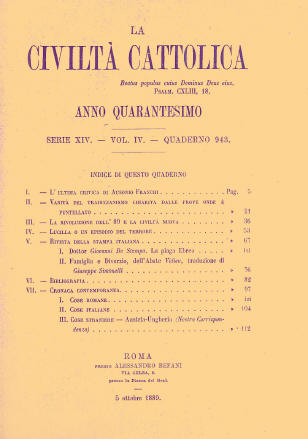
La Civiltà
Cattolica
(October 1889)
|
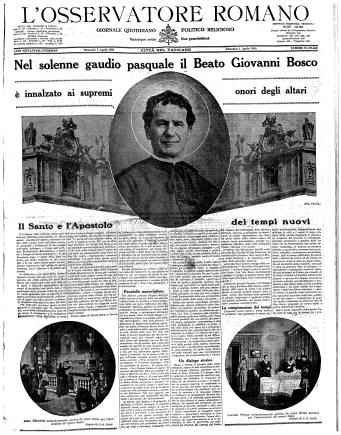
L'Osservatore Romano
(April 1934) |
The most influential of
these Catholic periodicals,
Civiltā
Cattolica, was founded at the request of Pope Pius IX and supervised by the
popes and their secretaries of state. This Jesuit journal kicked off its
long campaign against the Jews in December 1880 with a series of thirty-six
fiercely anti-Semitic articles published over the following forty months.
The central theme of these articles is summarized by David Kertzer (2001: 134):
"We told you to keep the
Jews in the ghettoes, to prevent them from coming into contact with Christians,
and yet you ignored our warnings and gave them equal rights. Now look what's
happened! Thanks to the Jews, religion is everywhere threatened and social
disorder spreads. Our only hope of restoring social harmony and economic
security is to bring back the special laws that kept them in their place."
Father Giuseppe Oreglia di
Santo Stefano, appointed to head the journal by Pope Pius IX, was one of the
journal's founders. The Jews, according to Father Oreglia, were at the heart of
all modern social ills, a point he expressed openly in his articles in
Civiltti Catholica
(quoted in Kertzer
2001: 136).
"The Jews --eternal
insolent children, obstinate, dirty, thieves, liars, ignoramuses, pests and the
scourge of those near and far-- . . . immediately abused [their newfound
freedom] to interfere with that of others. They managed to lay their hands on .
. . all public wealth . . . and virtually alone they took control not only of
all the money . . . but of the law itself in those countries where they have
been allowed to hold public offices."
Father Oreglia added that despite all this the Jews had the nerve to
complain that they were being persecuted.
"at the first shout by anyone
who dares raise his voice against this barbarian invasion by an enemy race,
hostile to Christianity and to society in general."
(ibid.: 137)
When Oreglia became ill,
leadership of the
Civiltā Cattolica
passed on to others, in particular
to Father Raffaelle Ballerini. In one article written by Bellerini titled "The
Jews-Why They Remain Jews", he
argued that Jews believed they were ordained to rule the world: "The
whole Jewish race . . .
is conspiring to achieve this reign
over all the world's peoples"
(ibid.: 143). Claiming (quite
remarkably!) that the Church always treated the Jews with compassion, the Jews,
according to Ballerini, displayed
"a remorseless, constant
war against the Christian religion and especially against Catholicism. And then
[the Jews also began] an unbridled campaign of usury; monopolies, and thievery
of every sort, to the detriment of those among whom they have enjoyed and
continue to enjoy civil liberties"
(ibid.).
For the
Jews, Ballerini concluded,
"brotherhood and peace
were and are merely pretexts to enable them to prepare -with
the destruction of Christianity, if possible, and with the undermining
of the Christian nations-- the messianic reign that they believe the Talmud
promises them"
(ibid.).
In
1872, L'Unitˆ Cattolica,
the Vatican-linked paper in Florence, published one of its earliest articles on
the Talmud. The Talmud, it reported, commands Jews to kill Christian children to
use their blood for their matzah.
In an
1893 article in the same publication, Father Saverio Rondina expressed what have
become typical allegations in anti-Jewish conspiracy theories. He characterized
the "Jewish Nation" as a
giant octopus
that with its oversized tentacles envelops everything. It has its stomach in the
banks . . . and its suction cups everywhere: in contracts and monopolies. . . .
in postal services and telegraph companies, in shipping and in the railroads, in
the town treasuries and in state finance. It represents the kingdom of capital .
. . the aristocracy of gold. . . . It reigns unopposed.
(ibid.: 145)
L'Osservatore Cattolico (a Milanese
Catholic publication) offered a similar assessment of Jewish perfidy. During
March and April 1892 --in a mere two months- it published forty-four articles focused on ritual murder trials
in which Jews were accused of killing Christian children to satisfy their lust
for Christian blood to be used in Jewish rituals. These articles were reprinted
in whole or in part in many Catholic publications throughout Italy, Germany,
Austria and France. One of these articles opened with the following statement:
"The trial against a Jew
accused of the ritual murder of a Christian boy has barely begun, and it has
already been established by many unimpeachable witnesses that Jews practice
ritual homicides so that they can use Christian blood in making their Passover
matzah. . . . It only confirms the conviction that the Jews truly do
murder Christians to use their blood in their detestable Talmudic and rabbinical
rites, and that to help them conceal these crimes, as well as for others no less
atrocious, the judiciary is entirely in the synagogue's control"
(ibid.: 162).
L'Osservatore cattolico's
director,
Father Davide Albertario, wrote gratefully of the praise he had
received from Pope Leo XIII during a private audience with the pope for the good
work his magazine had done:
"I don't know how to tell
you how much my soul filled with joy, comforted by His Holiness's smile, how
brightened it was by the Sovereign's most beautiful expressions of
satisfaction" (ibid.: 163).
.
In
1934, the Polish Catholic Journal Pro Christo
claimed that even after seven generations, converted Jews still gave off a
"Jew-stink," due to the relation of Jews to the devil, who smelled like feces
(Michael 2006: 9).
Given the virulent
anti-Semitism disseminated by leading Catholic magazines during the late 19th
and early 20th centuries, it is not surprising that Hitler and other
Nazis quoted frequently from these periodicals.
Thus,
while many tend to view Hitler and the Nazis as an aberration, completely
outside mainstream Western thought, the fact is that they represented the
culmination of 2,000 years of mainstream Christian teaching and practice. The
extent to which Nazi attitudes and behavior towards the Jews fit within the
main thrust of Western (Christian) Civilization is aptly summarized by Hilberg
(1985: 8-9).
The destruction of the
European Jews between 1933 and 1945 appears to us now as an unprecedented event
in history. . . . Yet, if we analyze this singularly massive upheaval, we
discover that most of what happened in those twelve years had already happened
before. The Nazi destruction process did not come out of a void: it was the
culmination of a cyclical trend. We have observed the trend in the three
successive goals of anti-Jewish administrators. The missionaries of Christianity
had said in effect: You have no right to live among us as Jews. The secular
rulers who followed had proclaimed: You have no right to live among us. The
German Nazis at last decreed: You have no right to live. . . . The German
Nazis, then, did not discard the past; they built upon it. They did not begin a
development; they completed it.
*
* * * *
REFERENCES
CITED
American-Israeli Cooperative Enterprise (AICE). (n.d.).
Christian-Jewish Relations: Burning of the
Talmud.
Jewish Virtual Library.
Chazan, Robert. (1988).
The Condemnation of the Talmud Reconsidered
(1239-1248).
Proceedings of the American Academy for
Jewish Research 55: 11-30.
Cohen, Jeremy. (1982).
The Friars and the Jews: The Evolution of Medieval Anti-Judaism.
Ithaca, Cornell University Press.
Cohn Samuel K, J. (2007). "The Black Death and the
Burning of Jews." Past and Present
196: 3-36.
Dundes, A., Ed. (1991).
The Blood Libel Legend: A Casebook in Anti-Semitic Folklore.
Madison, University of Wisconsin Press.
Ericksen, R. and S. Heschel, Eds. (1999).
Betrayal: German Churches and the Holocaust.
Minneapolis, Fortress Press.
Feldman, Stephan M. (1998).
Please Don't Wish Me a Merry Christmas: A Critical History
of the Separation of Church and State.
New York: New York University Press.
Gieysztor, A. (1948). "The Genesis of the Crusades: The
Encyclical of Sergius IV (1009-1012) I."
Medievalia et Humanistica 5: 1-23.
Gilchrist, J. (1988). "The Perception of Jews in the
Canon Law in the Period of the First Two Crusades."
Jewish History 3(1):
9-24.
Grayzel, S. (1967). "Jews and the Ecumenical Councils."
The Jewish Quarterly Review,
New Series 57: 287-311.
_________.
(1968). The
Jews and Roman Law.
The Jewish Quarterly Review
59(2): 93-117.
Guldon, Z. and J. Wijaczka (1997). The Accusation of
Ritual Murder in Poland, 1500-1800. In G. D. Hundert (ed),
Jews in Early Modern Poland.
London, The Littman Library of Jewish Civilization, pp. 99-140.
Hilberg, Raul. (1961). The
Destruction of the European Jews. New York,
Harper & Row.
Hsia, R. P.-c. (1988).
The Myth of Ritual Murder: Jews and Magic in Reformation Germany.
New Haven, Yale University Press.
Introvigne, Massimo. (2007) The Catholic Church and the Blood
Libel Myth: A Complicated Story. Covenant -
Global Jewish Magazine 1(2).
Julius, Anthony. (2006). On Blood Libels.
Engage, Issue 3.
Kertzer, D. I. (2001).
The Popes Against the Jews: The Vatican's Role in the Rise of Modern
Anti-Semitism. New York, Knopf.
Kisch, G. (1957). "The Yellow Badge in History."
Historia Judaica
19(2): 89-146.
Martin, Luther H. 1989. Roman Mithraism and
Christianity. Numen
36 (1): 2-15
Michael, R. (2006). Holy Hatred: Christianity, Antisemitism, and the Holocaust.
New York, Palgrave MacMillan.
O'Brian, A. C. (1971). "The Osservatore Romano and the
Matteotti Crisis; A Study of Journalistic Evasion."
Cithara 10(2): 27-39.
Paras, Emily. 2008. "The Darker Side of Martin Luther,"
Constructing the Past
9(1): Article 4.
Rembaum, J. E. (1982). "The Talmud and the Popes:
Reflections on the Talmud Trials of the 1240s."
Viator: Medieval and Renaissance Studies 13:
203-223.
Riley-Smith, J. (1984). "The First Crusade and the
Persecution of the Jews." Studies in Church
History 21: 51-72.
Rowan, S. W. (1985). "Luther, Bucer and Eck on the
Jews." The Sixteenth Century Journal
16(1): 79-90.
Stacey, R. C. (1998). "From Ritual Crucifixion to Host
Desecration: Jews and the Body of Christ."
Jewish History 12(1): 11-28.
Synan, Edward A. (1965).
The Popes and the Jews in the Middle Ages.
New York: Collier-Macmillan.
* *
* * *
Of Related
Interest:
.jpg)
The Date of Jesus' Birth
.jpg)
Mithraism and Christianity
* *
* * *
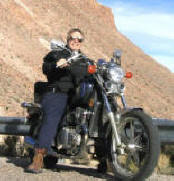
Home
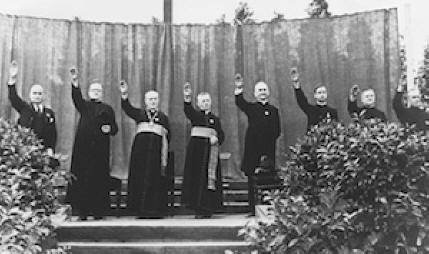
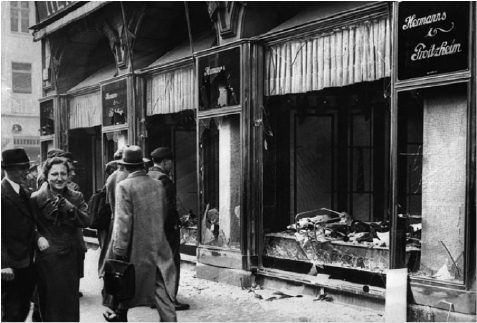
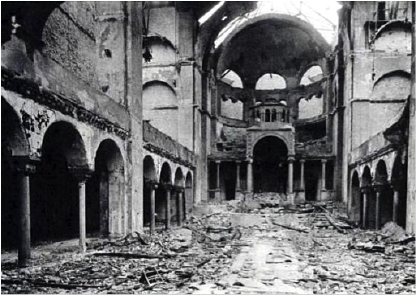
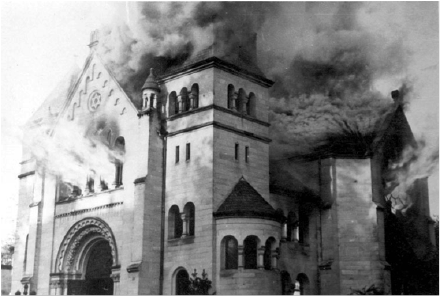





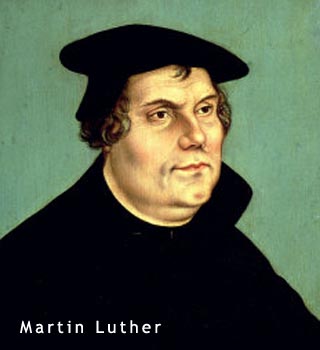
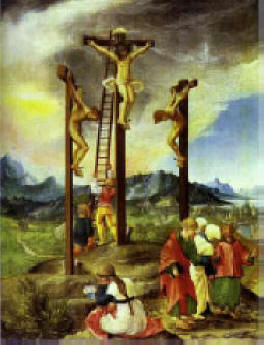
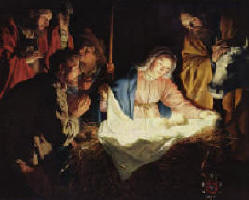

.jpg)
.jpg)
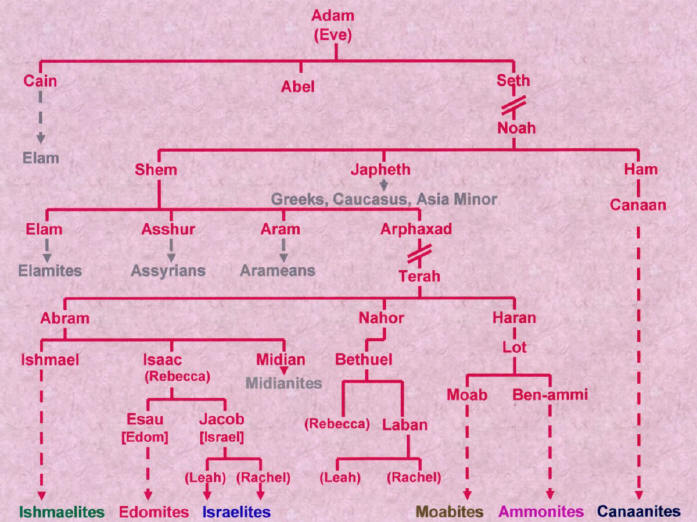
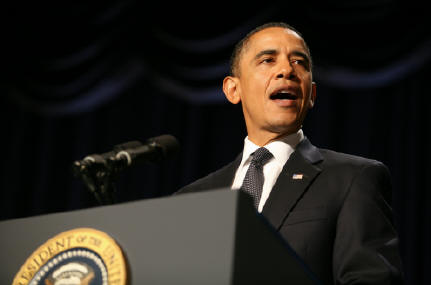
.jpg)

